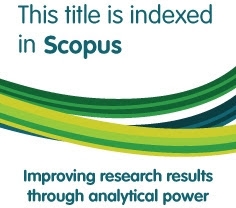Commodification of Ḥajj Rituals amongst Banjarese Pilgrims
Abstract
This paper is drawn from a larger study of Banjarese experiences in performing ḥajj or pilgrimage to Saudi Arabia. This phenomenological study employed in-depth interviews with about 50 informants in two different areas where Banjarese populations are concentrated, i.e. South Kalimantan and Indragiri Hilir. The theme of the commodification of rituals including ojek ḥajar aswad and badal haji emerged from the comprehensive data analysis. In theory, commodification refers to the practice to turn something into a commodity. In the experiences of some Banjarese pilgrims, commodified rituals have the importance of both spiritual enhancement and social pride, even though these practices sometimes involve cheating and manipulation from the side of the service providers. So, not only do ḥajj rituals provide sacred experiences for the pilgrims, but also an opportunity for some to make profits from them even through unethical or illegal conduct.
Keywords
Full Text:
PDFReferences
Al-Muayyidi, Majduddin Ibn al-Mansur al-Hasani. 2008. Al-Hajj Wa al-’Umrah. Yemen: Maktabat al-Yaman al-Kubra.
Al-Qurtubi, Muhammad Ibnu Rusyd al-Andalusi. 2004. 1 Bidāyat Al-Mujtahid Wa Nihāyat al-Muqtaṣid. Cairo: Dar al-Hadits.
Azra, Azyumardi. 1998. Jaringan Ulama Timur Tengah Dan Kepulauan Nusantara Abad XVII Dan XVIII. Bandung: Mizan.
Belk, Russell W., Melanie Wallendorf, and John F. Sherry. 1989. “The Sacred and the Profane in Consumer Behavior: Theodicy on the Odyssey.” Journal of Consumer Research 16(1): 1–38.
Blackwell, Ruth. 2010. “Motivation for Pilgrimage: Using Theory to Explore Motivations.” Scripta Instituti Donneriani Aboensis 22: 24–37.
Cohen, Jeffrey H., and Ibrahim Sirkeci. 2011. Cultures of Migration: The Global Nature of Contemporary Mobility. Texas: University of Texas Press.
Daud, Alfani. 1997. Islam Dan Masyarakat Banjar: Diskripsi Dan Analisa Kebudayaan Banjar. Jakarta: PT Raja Grafindo Persada.
Debord, Guy. 1995. The Society of The Spectacle. New York: Zone Books.
Fealy, Greg. 2008. “Consuming Islam: Commodified Religion and Aspirational Pietism in Contemporary Indonesia.” In Expressing Islam: Religious Life and Politics in Indonesia, Indonesia update series, ed. Sally White. Singapore: Institute of Southeast Asian Studies.
Fealy, Greg, and Sally White, eds. 2008. Expressing Islam: Religious Life and Politics in Indonesia. Singapore: Institute of Southeast Asian Studies.
HAMKA. 1983. Tafsir Al-Azhar Juz XVII,. Jakarta: Penerbit Pustaka Panjimas.
Hasan, Noorhaidi. 2016. “Islam Di Kota-Kota Menengah Indonesia: Kelas Menengah, Gaya Hidup, Dan Demokrasi.” In In Search of Middle Indonesia, Depok: Yayasan Pustaka Obor.
Hawkins, Mary. 2000. “Becoming Banjar.” The Asia Pacific Journal of Anthropology 1(1): 24–36.
Hilmy, Masdar. 2019. Spiritualitas Haji: Prosesi, Refleksi & Serba-Serbi. Surabaya: UIN Sunan Ampel Press.
Abd al-Āṭī, Ḥammūdah. 1995. The Family Structure in Islam. Oak Brook: The American Trust Publications.
Jafari, Aliakbari, and Ozlem Sandikci. 2016. “Introduction: Islam in Consumption, Marketing, and Market.” In Islam, Marketing and Consumption, New York: Routledge, 1–14.
Jafari, Aliakbari, and Ahmet Suerdem. 2012. “An Analysis Of Material Consumption Culture In The Muslim World.” Marketing Theory 12(1): 61–79.
Jones, Carla. 2010. “Materializing Piety: Gendered Anxieties about Faithful Consumption in Contemporary Urban Indonesia.” American Ethnologist 37(4): 617–37.
Kapusta, Jan. 2016. “The Maya Pilgrimage to the Black Christ A Phenomenology of Journey, Sacrifice, and Renewal.” Anthropos 111: 83–98.
Kitiarsa, Pattana. 2007. “Introduction: Asia’s Commodified Sacred Canopies.” In Religious Commodifications In Asia, Marketing Gods: Routledge, 1–12.
Makin, Al. 2017. “Tuhan Di Antara Desakan Dan Kerumunan: Komodifikasi Spiritualitas Makkah Di Era Kapitalisasi.” Episteme 12(1): 1–28.
Maslow, Abraham Harold. 1970. Motivation and Personality (2nd Ed.). New York: Harper & Row.
Miles, Matthew B., and A. Michael Huberman. 1994. Qualitative Data Analysis. Thousands Oaks: SAGE Publications.
Musa, Kamil. 1988. Ahkam Al-’Ibadat. Beirut: Muassasah al-Risalah.
Noor, Yusliani. 2012. “Sejarah Perkembangan Islam Di Banjarmasin Dan Peran Kesultanan Banjar (Abad XV-XIX).” Al-Banjari: Jurnal Ilmiah Ilmu-Ilmu Keislaman 11(2): 239-263.
Patton, Michael Quinn. 2002. Qualitative Evaluation and Research Methods. Newbury Park: SAGE Publications.
Qurashi, Jahanzeeb. 2017. “Commodification of Islamic Religious Tourism: From Spiritual to Touristic Experience.” International Journal of Religious Tourism & Pilgrimage 5(1): 89–104.
Raihani. 2018. “Banjarese Islamic Scholars (‘Ulema) and Social Transformation in Tembilahan (Preliminary Research).” Jurnal Ushuluddin, 26(2): 215–24.
Reid, Anthony. 1992. Asia Tenggara Dalam Kurun Niaga 1450-1680. Jakarta: Yayasan Obor.
Rinallo, Diego, Oliver, and Mathieu Alemany. 2019. “The Marketing and Consumption of Spirituality and Religion.” Journal of Management, Spirituality and Religion 16(1): 1–5.
Strauss, Anselm, Corbin, and Juliet. 1998. Basics of Qualitative Research (2nd Ed.). Thousand Oaks: Sage Publications.
Sucipto. 2013. “Umrah Sebagai Gaya Hidup, Eksistensi Diri Dan Komoditas Industri: Menyaksikan Perubahan Keagamaan Warga Kota.” Kontekstualita 28(1): 15–33.
Toguslu, Erkan. 2017. “The Meaning of Pilgrimage (Hajj): Re-Shaping the Pious Identity of Belgian Turkish Muslims.” Islam and Christian-Muslim Relations 28(1): 19–31.
DOI: https://doi.org/10.36712/sdi.v30i1.15258
Refbacks
- There are currently no refbacks.

All publication by Studia Islamika are licensed under a Creative Commons Attribution-NonCommercial 4.0 International License.
Studia Islamika, ISSN: 0215-0492, e-ISSN: 2355-6145
View My Stats
